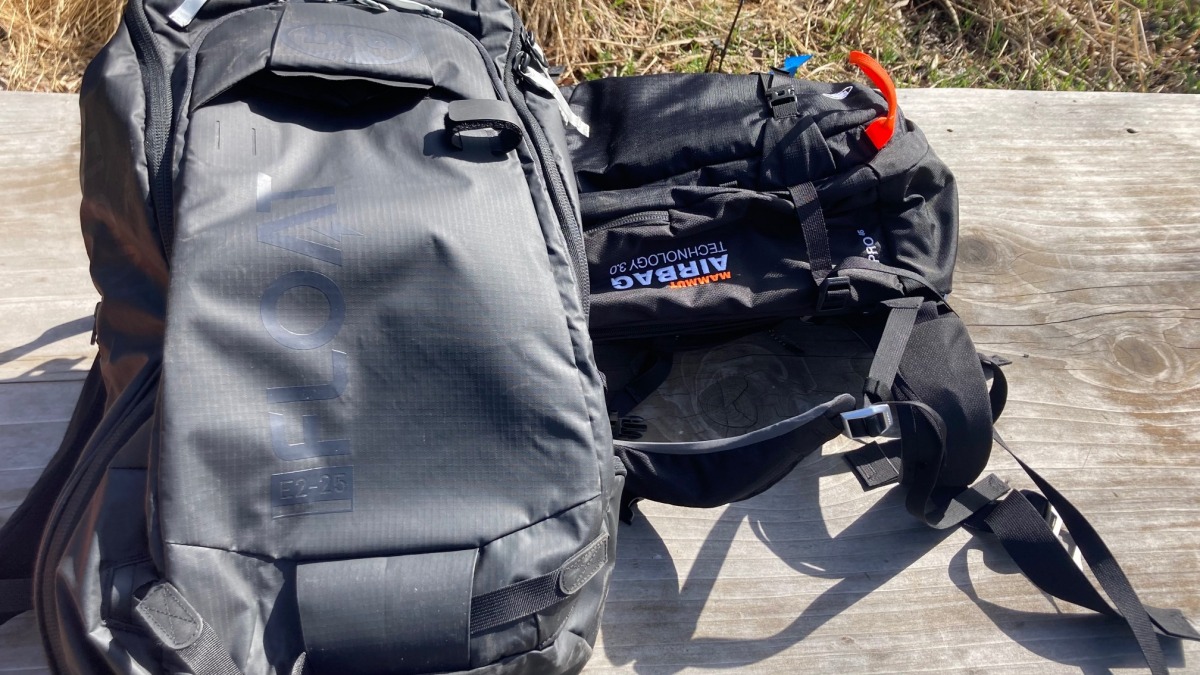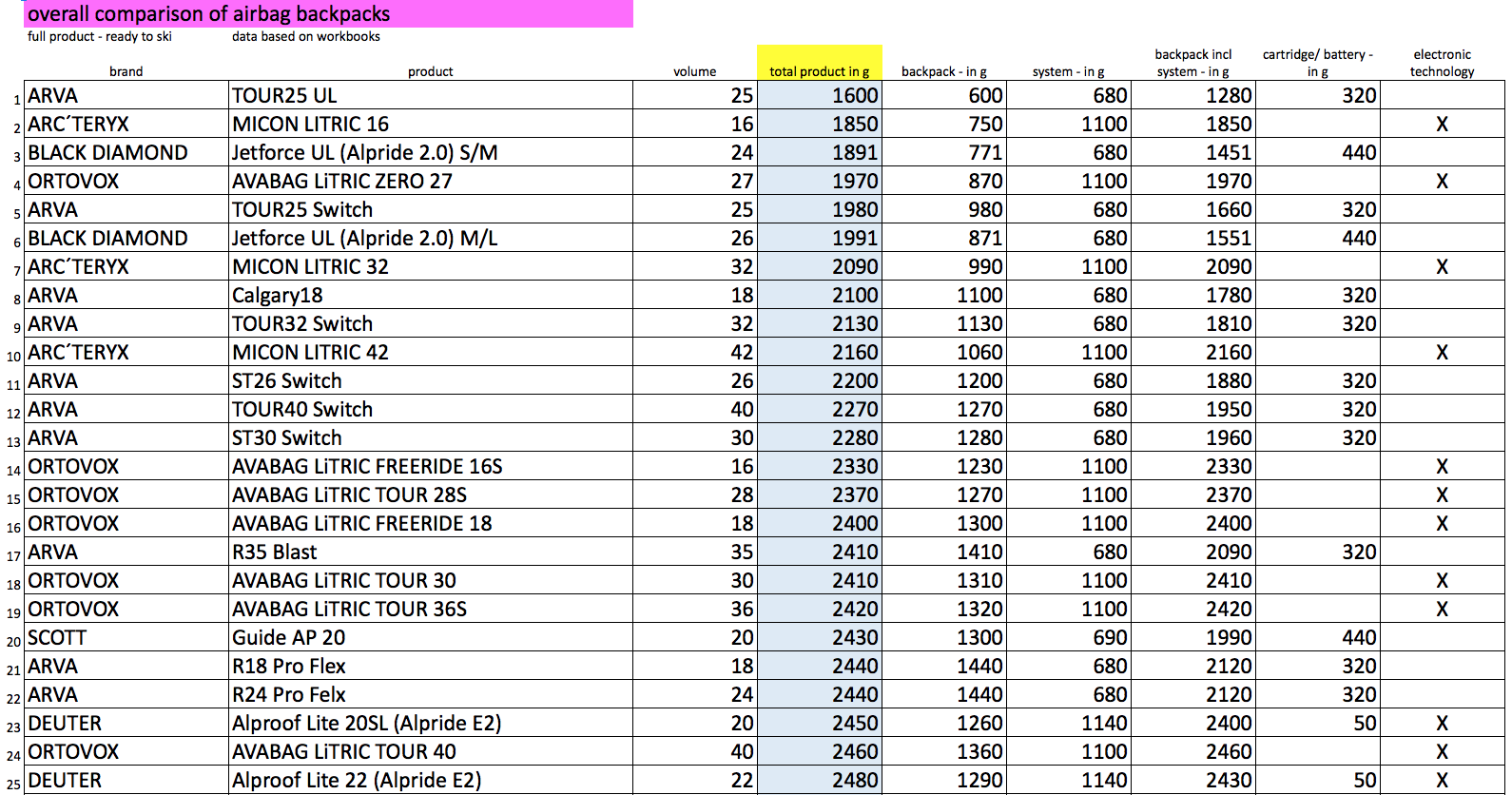
Two airbag packs we are currently reviewing: the Mammut Pro Removable 3.0 45L (right) and the new BCA Float E2 (available next fall).
I’ll go against the proper writing rules and begin with a ho-hum lede: The data I include in this story comes from the Ortovox Product Manager for airbag backpacks, Patrick Wesch. Yup, Ortovox produces and sells avalanche airbags. Yup, Wesch lists out the specs of Ortovox products in this category and most of their competitors. (If anyone notices a mistake in the data, please let me know, and I will amend the spreadsheet.) WildSnow has not verified the information in the spreadsheets.

A screen shot from: Overall comparisons of airbag backpacks. See the full spreadsheet for more details.
Primarily, from what I can discern, Wesch provides this data so consumers can make informed decisions. But let’s get this out front, from a pure weight perspective in the electronic airbag scene; Arc’teryx and Ortovox stand out for relative lightness. These companies joined resources to co-develop the Litric electronic system, which will come online to the public next ski season. So it’s not like Wesch provides data making Ortovox look anything other than industry leaders.
The email from Wesch arrived in late February after WildSnow published two pieces on avalanche airbags. The first piece created some comment buzz as it asked, “Should we be adding airbags to the shovel, beacon, probe safety arsenal?” The second story was a basic rundown of the Litrec system and what Ortovox and Arcteryx’ had in the works. If there is anything to conclude from the comments, many consider avy pack prices to be too high, the weights too heavy, or, in some or even all cases, avy packs are unneeded.
Backcountry skiing and riding are not cheap. I think we all struggle with the idea of how difficult it is to enter the scene and remain current with safety gear. The information presented in the spreadsheets appears concerned with weight only. But when considering weight, there are a few more details: there’s the system, say canister or electronic, the overall weight, which means backpack plus the system (we do not ski with the system alone), and then personal preference for backpack style. I’m not so much a gram counter when it comes to backpacks. I’d rather use a pack satisfying my design preferences and suffer an acceptable weight penalty. But certainly, others rightfully place the highest priority on weight. Variety makes the world go round.

A screenshot from: Overall comparisons of airbag backpacks. This page compares electronic airbag backpacks by weight.
Below, I’ll include some portions of the email that help explain Wesch’s overview of weight comparisons for avalanche airbags 2022/2023.
—The big brands are the primary focus: brands like Ferrino and Millet are not included. Also absent are Mammut and ABS. (I’ve got feelers out for that information.) FWIW, I’ve been testing their Pro Removable 3.0 45L avy pack this season (cartridge system), and I like it from a pack design perspective. You can find a full review here.
—According to Wesch, the data from competitors comes from product workbooks, and he assumes the data is accurate.
—From Wesch, “For ORTOVOX: I have decided to communicate the weight of the full product but without the extra strap for affixing a Snowboard since 95% of our customers will never use or carry this strap. I have also decided to exclude the weight of the helmet net from the communication if it is detachable since this is not standard in many products and a lot of touring skiers don’t use it.”
—Wesch also acknowledges form and function matter: “[Weight] is only one aspect of the performance for an avalanche backpack.”
The full set of data can be found here. At the top of the first spreadsheet, you’ll see a menu for additional spreadsheets.
Jason Albert comes to WildSnow from Bend, Oregon. After growing up on the East Coast, he migrated from Montana to Colorado and settled in Oregon. Simple pleasures are quiet and long days touring. His gray hair might stem from his first Grand Traverse in 2000 when rented leather boots and 210cm skis were not the speed weapons he had hoped for. Jason survived the transition from free-heel kool-aid drinker to faster and lighter (think AT), and safer, are better.
